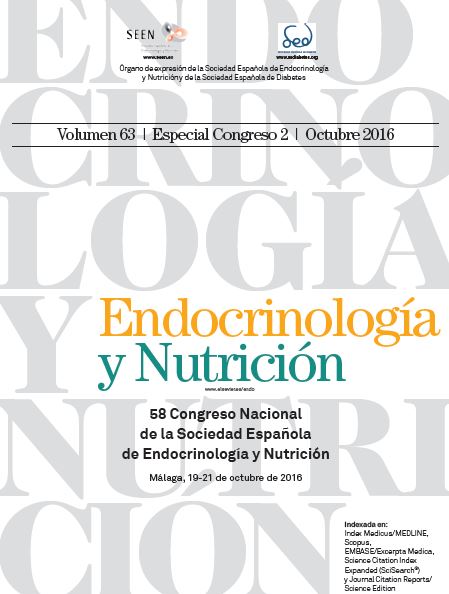49 - ADIPOSE TISSUE CONCENTRATION OF ENDOCRINE DISRUPTORS AND RISK OF OBESITY AND INSULIN RESISTANCE
aDepartment of Endocrinology and Nutrition. Virgen de la Victoria Hospital. Málaga University (IBIMA). CIBER Fisiopatología, Obesidad y Nutrición (CIBEROBN). Instituto de Salud Carlos III. Málaga. España. bInstituto de Investigación Biosanitaria (ibs.GRANADA). Hospitales Universitarios de Granada; CIBERESP. España.
Introduction: Obesity is traditionally associated with high caloric intake and low physical activity, but recent experimental and epidemiological studies suggest that exposure to certain persistent endocrine disrupting chemicals (EDCs), such as hexachlorobenzene (HCB), γ-hexachlorohexane (γ-HCH), o,p'-dichloro-diphenyltrichloroethane (o,p’-DDT) and polychlorinated biphenyls (PCBs), may disrupt crucial pathways involved in adipogenesis and increase the risk of obesity, acting as “obesogens”.
Objectives: The aim of this study was to evaluate the association between adipose tissue concentrations of selected EDCs and obesity/insulin resistance-related markers.
Methods: A cross-sectional study was conducted in 125 obese/non-obese subjects without insulin resistance undergoing surgery and not receiving blood glucose-lowering treatment in the Nutrition and Endocrinology Unit of Virgen de la Victoria Hospital [Málaga, Spain]. Adipose tissue EDC concentrations were quantified by GC-MS/MS. Anthropometric measures were gathered and body mass index (BMI) and homeostasis model assessment of insulin resistance (HOMA-IR) calculated. Associations between EDCs and obesity/insulin resistance markers were examined using both logistic and linear regression analyses adjusting for potential confounders.
Results: Most EDC concentrations were positively associated with obesity status, with ORs of 1.23-1.99 for obese vs normal weight (BMI < 25 Kg/m2), and of 1.63-3.61 for obese (BMI ≥ 30 Kg/m2) vs normal weight individuals, which were statistically significant for HCB, γ-HCH and o,p’-DDT. Adipose tissue HCB and γ-HCH levels were also positively and significantly associated with HOMA-IR levels, with ORs of 1.40 and 1.60 for patients with HOMA-IR 3-5 vs HOMA < 3, and OR: 1.47 and 1.88 for HOMA-IR > 5 vs HOMA < 3, and the association was also observed after stratification by obesity status.
Conclusions: Despite the cross-sectional study design, our results indicate that long-term accumulation of persistent EDCs burden might represent an additional risk factor for obesity and insulin resistance to those traditionally considered.





